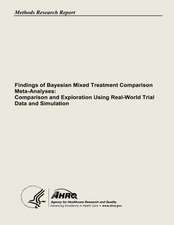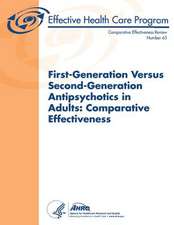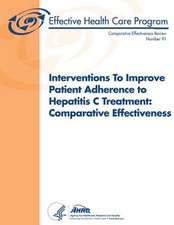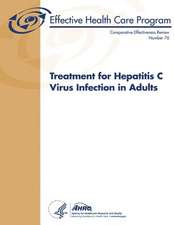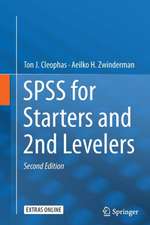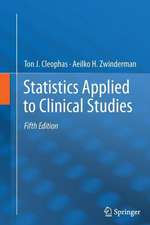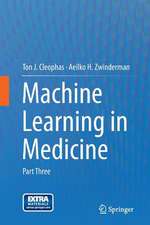Machine Learning in Medicine - a Complete Overview
Autor Ton J. Cleophas, Aeilko H. Zwindermanen Limba Engleză Paperback – 9 oct 2016
The amount of data stored in the world's databases doubles every 20 months, and clinicians, familiar with traditional statistical methods, are at a loss to analyze them. Traditional methods have, indeed, difficulty to identify outliers in large datasets, and to find patterns in big data and data with multiple exposure / outcome variables. In addition, analysis-rules for surveys and questionnaires, which are currently common methods of data collection, are, essentially, missing. Fortunately, the new discipline, machine learning, is able to cover all of these limitations.
So far medical professionals have been rather reluctant to use machine learning. Also, in the field of diagnosis making, few doctors may want a computer checking them, are interested in collaboration with a computer or with computer engineers. Adequate health and health care will, however, soon be impossible without proper data supervision from modern machine learning methodologies like cluster models, neural networks and other data mining methodologies.
Each chapter starts with purposes and scientific questions. Then, step-by-step analyses, using data examples, are given. Finally, a paragraph with conclusion, and references to the corresponding sites of three introductory textbooks, previously written by the same authors, is given.
Preț: 665.96 lei
Preț vechi: 701.01 lei
-5% Nou
Puncte Express: 999
Preț estimativ în valută:
127.43€ • 132.79$ • 105.51£
127.43€ • 132.79$ • 105.51£
Carte tipărită la comandă
Livrare economică 03-17 aprilie
Preluare comenzi: 021 569.72.76
Specificații
ISBN-13: 9783319386386
ISBN-10: 3319386387
Pagini: 540
Ilustrații: XXIV, 516 p. 159 illus.
Dimensiuni: 155 x 235 x 28 mm
Greutate: 0.75 kg
Ediția:Softcover reprint of the original 1st ed. 2015
Editura: Springer International Publishing
Colecția Springer
Locul publicării:Cham, Switzerland
ISBN-10: 3319386387
Pagini: 540
Ilustrații: XXIV, 516 p. 159 illus.
Dimensiuni: 155 x 235 x 28 mm
Greutate: 0.75 kg
Ediția:Softcover reprint of the original 1st ed. 2015
Editura: Springer International Publishing
Colecția Springer
Locul publicării:Cham, Switzerland
Cuprins
Preface. Section I Cluster and Classification Models.- Hierarchical Clustering and K-means Clustering to Identify Subgroups in Surveys (50 Patients).- Density-based Clustering to Identify Outlier Groups in Otherwise Homogeneous Data (50 Patients).- Two Step Clustering to Identify Subgroups and Predict Subgroup Memberships in Individual Future Patients (120 Patients)- Nearest Neighbors for Classifying New Medicines (2 New and 25 Old Opioids)- Predicting High-Risk-Bin Memberships (1445 Families).- Predicting Outlier Memberships (2000 Patients).- Data Mining for Visualization of Health Processes (150 Patients).- 8 Trained Decision Trees for a More Meaningful Accuracy (150 Patients).- Typology of Medical Data (51 Patients).- Predictions from Nominal Clinical Data (450 Patients).- Predictions from Ordinal Clinical Data (450 Patients).- Assessing Relative Health Risks (3000 Subjects).- Measurement Agreements (30 Patients).- Column Proportions for Testing Differences between Outcome Scores(450 Patients).- Pivoting Trays and Tables for Improved Analysis of Multidimensional Data (450 Patients).- Online Analytical Procedure Cubes for a More Rapid Approach to Analyzing Frequencies (450 Patients).- Restructure Data Wizard for Data Classified the Wrong Way (20 Patients).- Control Charts for Quality Control of Medicines (164 Tablet Disintegration Times).- Section II (Log) Linear Models.- Linear, Logistic, and Cox Regression for Outcome Prediction with Unpaired Data (20, 55, and 60 Patients).- Generalized Linear Models for Outcome Prediction with Paired Data (100 Patients and 139 Physicians).- Generalized Linear Models for Predicting Event-Rates (50 Patients).- Factor Analysis and Partial Least Squares (PLS) for Complex-Data Reduction (250 Patients).- Optimal Scaling of High-sensitivity Analysis of Health Predictors (250 Patients).- Discriminant Analysis for Making a Diagnosis from Multiple Outcomes (45 Patients).- Weighted Least Squares for Adjusting Efficacy Data with Inconsistent Spread (78 Patients).- Partial Correlations for Removing Interaction Effects from Efficacy Data (64 Patients).- Canonical Regression for Overall Statistics of Multivariate Data (250 Patients).- Multinomial Regression for Outcome Categories (55 Patients).- Various Methods for Analyzing Predictor Categories (60 and 30 Patients).- Random Intercept Models for Both Outcome and Predictor Categories (55 Patients).- Automatic Regression for Maximizing Linear Relationships (55 Patients).- Simulation Models for Varying Predictors (9000 Patients).- Generalized Linear Mixed Models for Outcome Prediction from Mixed Data (20 Patients).- Two Stage Least Squares for Linear Models with Problematic Predictors (35 Patients).- Autoregressive Models for Longitudinal Data (120 Monthly Population Records).- Variance Components for Assessing the Magnitude of Random Effects (40 Patients).- Ordinal Scaling for Clinical Scores with Inconsistent Intervals (900 Patients).- Loglinear Models for Assessing Incident Rates with Varying Incident Risks (12 Populations).- Loglinear Models for Outcome Categories (445 Patients).- Heterogeneity in Clinical Research: Mechanisms Responsible (20 Studies).- Performance Evaluation of Novel Diagnostic Tests (650 and 588 Patients).- Quantile - Quantile Plots, a Good Start for Looking at Your Medical Data (50 Cholesterol Measurements and 52 Patients).- Rate Analysis of Medical Data Better than Risk Analysis (52 Patients).- Trend Tests Will Be Statistically Significant if Traditional Tests Are not (30 and 106 Patients).- Doubly Multivariate Analysis of Variance for Multiple Observations from Multiple Outcome Variables (16 Patients).- Probit Models for Estimating Effective Pharmacological Treatment Dosages (14 Tests).- Interval Censored Data Analysis for Assessing Mean Time to Cancer Relapse (51 Patients).- Structural Equation Modeling with SPSS Analysis of Moment Structures (Amos) for Cause Effect Relationships I (35 Patients).- Structural Equation Modeling with SPSS Analysis of Moment Structures (Amos) for Cause Effect Relationships II (35 Patients).- Section III Rules Models.- Neural Networks for Assessing Relationships that are Typically Nonlinear (90 Patients). Complex Samples Methodologies for Unbiased Sampling (9,678 Persons).- Correspondence Analysis for Identifying the Best of Multiple Treatments in Multiple Groups (217 Patients).- Decision Trees for Decision Analysis (1004 and 953 Patients).-Multidimensional Scaling for Visualizing Experienced Drug Efficacies (14 Pain-killers and 42 Patients).- Stochastic Processes for Long Term Predictions from Short Term Observations.- Optimal Binning for Finding High Risk Cut-offs (1445 Families).- Conjoint Analysis for Determining the Most Appreciated Properties of Medicines to Be Developed (15 Physicians).- Item Response Modeling for Analyzing Quality of Life with Better Precision (1000 Patients).- Survival Studies with Varying Risks of Dying (50 and 60 Patients).- Fuzzy Logic for Improved Precision of Pharmacological Data Analysis (9 Induction Dosages).- Automatic Data Mining for the Best Treatment of a Disease (90 Patients).- Pareto Charts for Identifying the Main Factors of Multifactorial Outcomes (2000 Admissions to Hospital).- Radial Basis Neural Networks for Multidimensional Gaussian Data (90 persons).- Automatic Modeling for Drug Efficacy Prediction (250 Patients).- Automatic Modeling for Clinical Event Prediction (200 Patients).- Automatic Newton Modeling in Clinical Pharmacology (15 Alfentanil dosages, 15 Quinidine time-concentration relationships).- Spectral Plots for High Sensitivity Assessment of Periodicity (6 Years’ Monthly C Reactive Protein Levels).- Runs Test for Identifying Best Analysis Models (21 Estimates of Quantity and Quality of Patient Care).- Evolutionary Operations for Health Process Improvement (8 Operation Room Settings).- Bayesian Networks for Cause Effect Modeling (600 Patients).- Support Vector Machines for Imperfect Nonlinear Data.- Multiple Response Sets for Visualizing Clinical Data Trends (811 Patient Visits).- Protein and DNA Sequence Mining.- Iteration Methods for Crossvalidation (150 Patients).- Testing Parallel-groups with Different Sample Sizes and Variances (5 Parallel-group Studies).- Association Rules between Exposure and Outcome (50 and 60 Patients).- Confidence Intervals for Proportions and Differences in Proportions (100 and 75 Patients).- Ratio Statistics for Efficacy Analysis of New Drugs 50 Patients).- Fifth Order Polynomes of Circadian Rhythms (1 Patient).- Gamma Distribution for Estimating the Predictors of Medical Outcomes (110 Patients) Index.
Recenzii
“This is designed to be the first complete overview of machine learning methodologies for the medical and health sector. … It is targeted primarily at medical and healthcare sector personnel, physicians and students, as well as anyone involved in the process of health and healthcare. … This is an excellent resource for medical professionals wishing to understand and use machine learning methods.” (Kamesh Sivagnanam, Doody's Book Reviews, June, 2015)
Textul de pe ultima copertă
The current book is the first publication of a complete overview of machine learning methodologies for the medical and health sector. It was written as a training companion, and as a must-read, not only for physicians and students, but also for any one involved in the process and progress of health and health care. In eighty chapters eighty different machine learning methodologies are reviewed, in combination with data examples for self-assessment. Each chapter can be studied without the need to consult other chapters.
The amount of data stored in the world's databases doubles every 20 months, and clinicians, familiar with traditional statistical methods, are at a loss to analyze them. Traditional methods have, indeed, difficulty to identify outliers in large datasets, and to find patterns in big data and data with multiple exposure / outcome variables. In addition, analysis-rules for surveys and questionnaires, which are currently common methods of data collection, are, essentially, missing. Fortunately, the new discipline, machine learning, is able to cover all of these limitations.
So far medical professionals have been rather reluctant to use machine learning. Also, in the field of diagnosis making, few doctors may want a computer checking them, are interested in collaboration with a computer or with computer engineers. Adequate health and health care will, however, soon be impossible without proper data supervision from modern machine learning methodologies like cluster models, neural networks, and other data mining methodologies.
Each chapter starts with purposes and scientific questions. Then, step-by-step analyses, using data examples, are given. Finally, a paragraph with conclusion, and references to the corresponding sites of three introductory textbooks, previously written by the same authors, is given.
The amount of data stored in the world's databases doubles every 20 months, and clinicians, familiar with traditional statistical methods, are at a loss to analyze them. Traditional methods have, indeed, difficulty to identify outliers in large datasets, and to find patterns in big data and data with multiple exposure / outcome variables. In addition, analysis-rules for surveys and questionnaires, which are currently common methods of data collection, are, essentially, missing. Fortunately, the new discipline, machine learning, is able to cover all of these limitations.
So far medical professionals have been rather reluctant to use machine learning. Also, in the field of diagnosis making, few doctors may want a computer checking them, are interested in collaboration with a computer or with computer engineers. Adequate health and health care will, however, soon be impossible without proper data supervision from modern machine learning methodologies like cluster models, neural networks, and other data mining methodologies.
Each chapter starts with purposes and scientific questions. Then, step-by-step analyses, using data examples, are given. Finally, a paragraph with conclusion, and references to the corresponding sites of three introductory textbooks, previously written by the same authors, is given.
Caracteristici
First publication of a complete overview of machine learning methodologies for the medical and health sector Written as a training companion, and as a must-read, not only for physicians and students, but also for anyone involved in the process and progress of health and health care In 80 chapters 80 different machine learning methodologies are reviewed, in combination with a data example for self-assessment Each chapter can be studied without the need to consult other chapters







